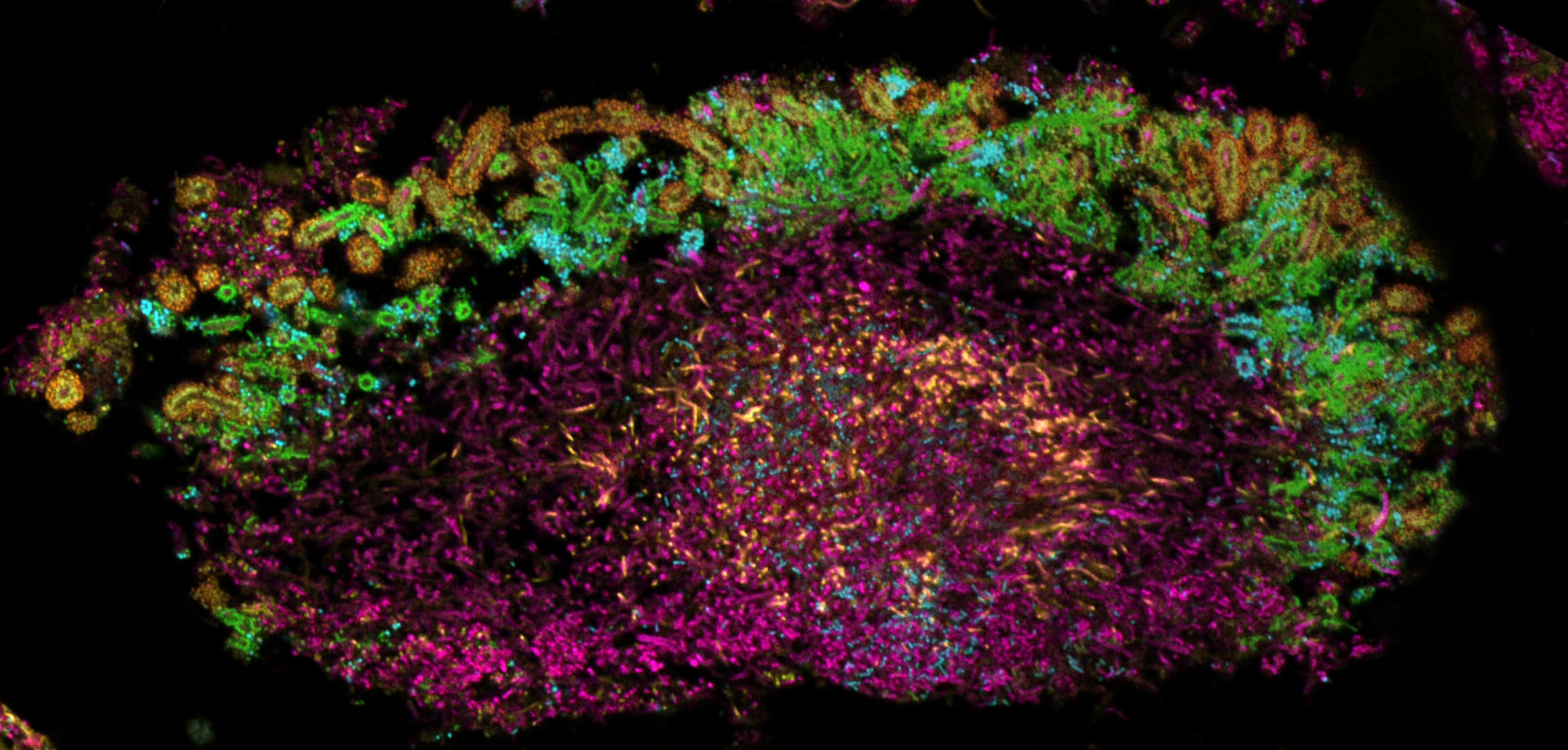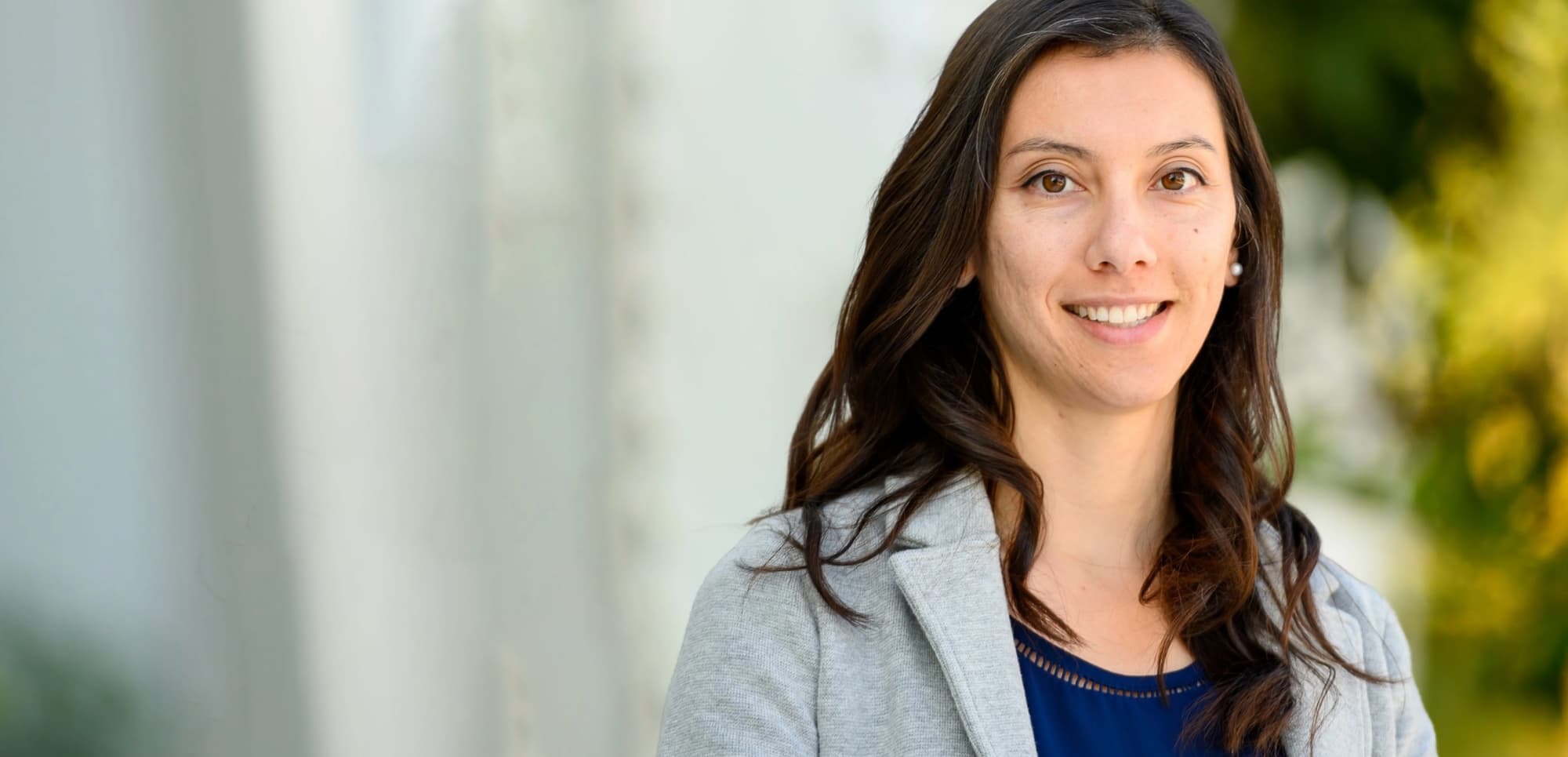The Chan Zuckerberg Initiative is committed to leveraging our core principles of collaboration, open science and diversity, equity and inclusion to realize a better future for all. In doing so, we build tools with dedicated technology teams and fund technology development to accelerate progress in science and education. From software development to research analysis, CZI’s “Tech Talks” series features members of our technology teams working to develop tools that drive innovation and create impact.
In this edition, we catch up with Justine Larsen, an engineering manager on the CZI Science Imaging team. Justine leads an engineering team in developing imaging tools for scientific research. Justine went to university for business and graduated during the Great Recession. After graduation, Justine searched for a job in business and marketing, but soon realized she was more interested in designing web pages and learning to code. Pursuing this new passion and interest, she began as a software developer, expanding her knowledge in everything she could about production-level software development, design, and managing processes — all at the same time! After gaining diverse experience in this position, she spent the next five years at a biotechnology company, learning about imaging technology and how to become an engineering manager.
At CZI, Justine continues to fuel her passion for the intersection of technology and science. Most importantly, she considers her current position at CZI to be particularly unique, as it gives her the chance to work for a purposeful organization with a strong focus on technology.
There’s just so much we still don’t know about the human body, and imaging technologies will definitely help researchers understand and make new discoveries faster. I love being able to contribute to positive change, and I feel we are able to do that at CZI.
Tell us about the CZI technology you are currently working on.
Through contributions to the napari project and creation of the napari hub, my team is currently working to build an imaging platform for image visualization and analysis. Napari is an open source multi-dimensional image viewer written in Python and built by a global community of scientists, computational biologists, and software engineers with major contributions from CZI, the Chan Zuckerberg Biohub, and CZI grantees. Napari supports the installation of plugins that are created by the community to enable extended functionality. By working with the napari community and contributing to open source projects like napari and the napari hub, we’re able to stay close to the people and problems, while uplifting the communities who develop and use imaging analysis tools.
What problem are you looking to solve?
The long-term vision of CZI’s Imaging program is to allow scientists and physicians to directly observe and analyze any biological processes across spatial scales, throughout the body, in real time. Right now, on the Imaging Tech Team, we are focused on analysis problems and looking to give researchers access to reproducible, quantitative image analysis.
Why is this problem important?
There are so many different imaging tools out there for scientists to use. It’s very fragmented and difficult for them to find the right tools for their needs. Additionally, it is likely that they’ll need to use several different tools to get the job done. Our goal is to provide an integrated imaging platform that is easy to use and meets their needs throughout their entire journey.
For researchers who are using cutting-edge imaging technologies, the amount of data they collect can be enormous. Terabytes of data can easily be collected over multiple dimensions, making visualization and analysis quite challenging. Napari was created because the original co-creators could not find a tool that they could use for image visualization, as their data sets were too large and complex. They had a need and they knew others had this need, too.
Why does this problem resonate with you?
Imaging technologies touch the lives of so many people in different ways — from getting an MRI scan done to diagnose a health issue to diagnosing cancer from a tissue biopsy. There’s just so much we still don’t know about the human body, and imaging technologies will definitely help researchers understand and make new discoveries faster. I love being able to contribute to positive change, and I feel we are able to do that at CZI.
How have you been involved in advancing technology at CZI?
When I joined the CZI Imaging team, we were quite small and the open source project, napari, was a very young project compared to other imaging applications. In the time that I’ve been with CZI, we’ve grown the team considerably and have been heavily contributing to the napari project for over a year. At the end of June 2021, we also built and launched the napari hub, which seeks to solve challenges in finding analysis solutions to bioimaging problems. After only a few months, we reached a milestone of over 100 plugins available for use with napari through the napari hub. Using plugins, scientists can analyze microscopy imaging data — such as segmenting biological structures like cells to better understand or quantify them — and access emerging methods for bioimage analysis that leverage machine learning. We also funded 41 projects through the napari Plugin Accelerator Grants to create new plugins, maintain existing plugins and build out infrastructure for other plugins.
A significant chunk of my tenure has been during the COVID-19 pandemic. In certain ways, working from home has actually brought my team closer together. We got into a groove of working together remotely and built a strong foundation, developing the team’s strategy and vision over the past 18 months. We’ve built an amazing team that has so much knowledge and experience, and I’m so proud of what we’ve accomplished so far!

Spectral image of bacterial biofilms of the human oral cavity are identified by their unique color. Photograph by napari Plugin Accelerator grantee Blair Rossetti.
What gets you most excited about finding solutions to technical problems?
I like puzzles and challenges in general, and technical challenges are very exciting to me. I love being able to write software to create something from nothing that can solve real world problems. A recent example of this at CZI would be the launch of the napari hub. My team was able to create a hub where users can search, find and install napari plugins for image analysis where previously there was a gap. There wasn’t a website that was easy for users to navigate to discover napari plugins, and so we worked quickly to understand what users needed and built it out. I’m really excited to see what different kinds of plugins get created and how they can be used to accelerate science!
Can you share a little bit about the technologies used to build napari and the napari hub?
Napari is built using Python and Python libraries like Qt and Vispy for the graphical user interface and rendering engine. It’s a desktop application that you can install onto your computer running Windows, Linux or MacOS. The napari hub, on the other hand, is a web application that you can access from any computer with internet access. It’s built using React, a JavaScript library for creating graphical user interfaces, on the client side and runs in the browser.
What makes this meaningful or emerging technology?
There are a few reasons. Napari is built using Python and is an open-source tool. It’s a general multi-dimensional image visualization tool that is agnostic of the type of data to be visualized and therefore, allows users to view data like 2D, 3D, or time series data without dimensional limits. Also, napari is one of a few tools in its class that is written in Python, meeting its users in the language they are most familiar with.
How are you seeing this tool make a difference in science?
Earlier this year, the team formed a cohort of bioimage analysts and helped them through the process of creating napari plugins. In parallel, we built and launched a web application to publish these plugins and any other napari plugins that the community creates. The web application allows users to search, find and install napari plugins for image analysis. Now, plugin developers are publishing all different kinds of plugins which they can easily share with others to help with image analysis in their experiments. Providing a platform like this for the community will allow creativity in ways that we can’t even imagine.
The napari application is gaining traction as more users discover and use the tool to alleviate pain points in their image analysis workflow. The software is currently in alpha phase and the team is rapidly adding new features. Even in this early stage, we are seeing incredible excitement for and early adoption of the napari tool because of its potential in lowering the barriers to reproducible, quantitative image analysis and large data visualization. The application gets approximately 14,000 downloads per month from the Python Package Index, and we are seeing an average of 250 unique visitors to the napari documentation website each day.
How can this technology make a difference one year from now, 10 years from now, and or even 50-100 years from now?
In less than six months, we’ve seen the napari hub grow to over 100 plugins and we expect continued growth through the first year. In 10 years, researchers should be able to observe biological processes across spatial scales, analyze data and share methods and tools. The napari plugins will play a big part in solving these visualization and analysis challenges. By providing researchers with common, integrated and accessible tools like napari and the napari hub, they can focus on discovering scientific breakthroughs and fostering collaborations between researchers instead of spending time recreating tools that aren’t accessible or don’t meet their needs. Ultimately, this should get us closer to CZI Science’s mission to cure, prevent or manage all diseases by the end of this century.
The Chan Zuckerberg Initiative is a new kind of philanthropic organization focused on engineering change at scale. Interested in joining one of our full-stack technology teams to build software and support our strategic partners that are developing tools to accelerate progress in science and education? Explore CZI career opportunities now.

